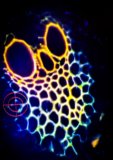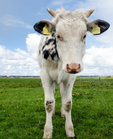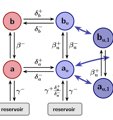Research
Our group is located at a laboratory with biosafety level 2 and we have the rare opportunity to combine theoretical studies and modelling with experiments on pathogens. Moreover, we work in close collaboration with biologists, experimental physicists, and veterinarians at LMU and elsewhere. Our research focuses are:
Understanding the Statistical Physics of Life
Statistical mechanics provides a wealth of powerful tools for elucidating the basic working principles of biological systems. We employ formalisms for discrete and continuous stochastic dynamics, network theory, continuum mechanics, and concepts from thermodynamics for modeling the statistical physics of life. Biological systems are usually quite complex, far from equilibrium, and thermal fluctuations are non-negligible. Understanding the principles governing such non-equilibrium systems is one of the most challenging and inspiring problems in physics.
 Imaging the Micromechanics of Life
Imaging the Micromechanics of Life
Cells actively generate mechanical forces. These forces play a fundamental role for many biological processes, from cell migration to formation of multicellular structures and even infection by pathogens. We develop state-of-the-art microscopy methods to visualize the micromechanics of life. With these methods, we address biophysical questions, such as how cells adapt their adhesion to the environment, how cells navigate in complex surroundings, and how pathogens control the mechanical forces that they generate to infect to host cells. Information about some of our previous work can be found here.
 Veterinary Science and Climate Change Mitigation
Veterinary Science and Climate Change Mitigation
We study how microbes produce the greenhouse gas methane in the cow rumen. More here.


